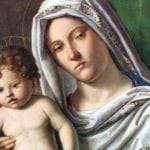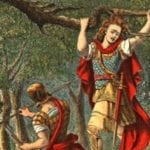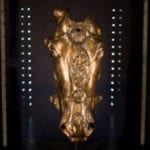 Movies and TV
Movies and TV  Movies and TV
Movies and TV  History
History 10 Things You Never Knew About Presidential First Ladies
 Movies and TV
Movies and TV 10 Zombie Movies That Will Actually Terrify You
 Humans
Humans 10 Times Scientists Were Absolutely Sure… and Absolutely Wrong
 Our World
Our World 10 Pivotal Moments for Life on Earth
 Movies and TV
Movies and TV 10 Most Realistic Medical TV Shows of All Time
 Creepy
Creepy 10 Eerie & Mysterious Ghosts of the Pacific Coast
 Weird Stuff
Weird Stuff 10 Typos That Accidentally Changed History
 History
History 10 Times Trickery Won Battles
 Technology
Technology 10 Awesome Upgrades to Common Household Items
 Movies and TV
Movies and TV 10 Movie Flops That Found Their Way to Cult Classic Status
 History
History 10 Things You Never Knew About Presidential First Ladies
 Movies and TV
Movies and TV 10 Zombie Movies That Will Actually Terrify You
Who's Behind Listverse?

Jamie Frater
Head Editor
Jamie founded Listverse due to an insatiable desire to share fascinating, obscure, and bizarre facts. He has been a guest speaker on numerous national radio and television stations and is a five time published author.
More About Us Humans
Humans 10 Times Scientists Were Absolutely Sure… and Absolutely Wrong
 Our World
Our World 10 Pivotal Moments for Life on Earth
 Movies and TV
Movies and TV 10 Most Realistic Medical TV Shows of All Time
 Creepy
Creepy 10 Eerie & Mysterious Ghosts of the Pacific Coast
 Weird Stuff
Weird Stuff 10 Typos That Accidentally Changed History
 History
History 10 Times Trickery Won Battles
 Technology
Technology 10 Awesome Upgrades to Common Household Items
10 Theories About Who Really Wrote The Bible
An ordinary Christian and a biblical scholar look at the Bible in tremendously different ways. The average churchgoer knows nothing of the textual problems beneath the familiar words. Bible scholars, however, consider the book a human artifact like any other. They have made it their life’s work to decode and deconstruct it from that perspective.
From studying the texts themselves, Bible scholars have come up with many theories on who actually wrote the scriptures. These theories provide serious challenges to traditional assumptions on Bible authorship.
10Moses Did Not Write The Pentateuch
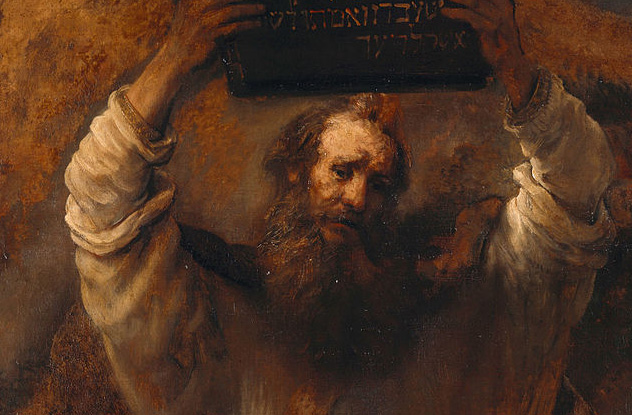
Jews and Christians widely believe that Moses wrote the first five books in the Bible. Beginning with some medieval rabbis, however, doubts about this claim have been raised. As an obvious starting point, Moses could not have written Deuteronomy 34:5–10, which speaks about his death. But this glaring inconsistency is just the beginning.
The books contain anachronisms that Moses could not have written. Genesis 36, for example, lists Edomite kings who lived long after Moses died. The Philistines are mentioned in Genesis, yet they did not arrive in Canaan until 1200 B.C., after the time of Moses.
Genesis 12:6 implies that the author was writing after the Canaanites had been driven out of the region, something that didn’t happen until the time of Moses’s successor Joshua. Similarly, a clue in Genesis 36:31 suggests that the text was written when Israel was already a monarchy. Genesis 24 mentions domesticated camels, but camels were not domesticated until much later. The caravan trade in Genesis 37:25 only flourished in the eighth and seventh centuries B.C.
An early explanation for these textual anomalies was that Moses wrote the core of the Pentateuch, but later editors, such as Ezra, made additions. But in 1670, the philosopher Baruch Spinoza first proposed that Moses did not pen any of these books at all. It was common practice in the ancient Near East to attribute a work to an ancestral hero, or even a god, to legitimize its message and contents. That is probably what happened here.
9The Documentary Hypothesis
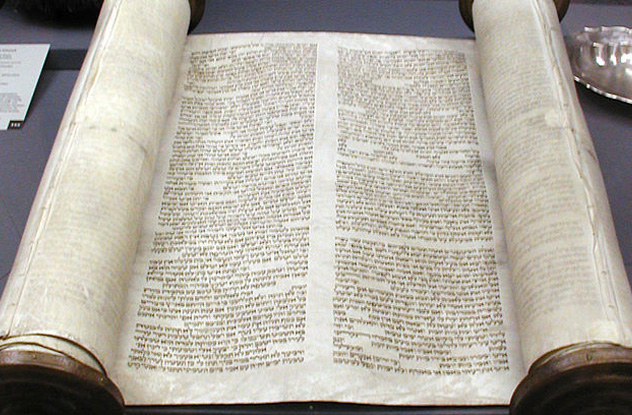
In the 19th century, scholars began to discover more inconsistencies and anomalies in the Bible, and its compositional history appeared more complex than anyone had previously thought. In 1886, the German historian Julius Wellhausen proposed that the Hexateuch (the Pentateuch plus Joshua) was a composite of four distinct documents by different authors. These documents were labeled J (Jahwist), E (Elohist), D (Deuteronomist), and P (Priestly), and each has its own theology and agenda.
This theory explains overlapping or repetitive stories (“doublets”) such as the two accounts of Creation and the two accounts of the Flood—Genesis 7:17 describes a 40-day flood, while Genesis 8:3 describes one lasting 150 days. It is believed that later editors stitched together the multiple sources into one narrative, sometimes intertwining two versions of a single story and neglecting to iron out the seams, as can be seen in the Flood narrative.
The J source calls God “Yahveh,” or “Jahveh” in German, hence the designation “J.” It pictures God in anthropomorphic terms, appearing to people like Abraham face-to-face. E calls the deity “Elohim,” who shows Himself indirectly, as in dreams. D is the source for Deuteronomy as well as the books of Joshua, Judges, Samuel, and Kings. It defines God as having no form that anyone can see at all. P is cultic in its character and is obsessed with genealogies and lists.
More recently, the idea of four separate, complete, and coherent documents has come under question, but the composite character of the Pentateuch remains the commonly accepted view.
8Deuteronomy Originated As Royal Propaganda
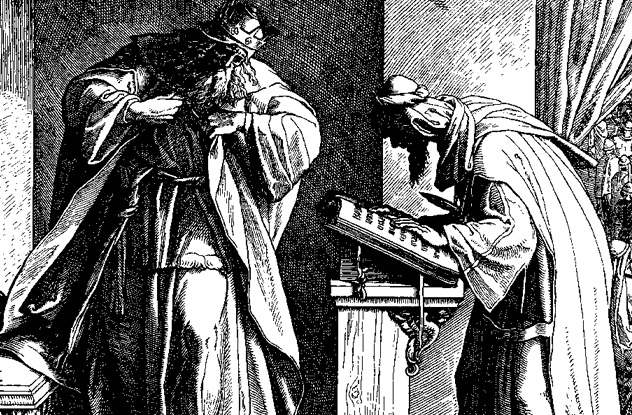
Deuteronomy means “Second Law.” It is theorized that the book was produced during the time of King Josiah in the seventh century to promulgate new laws strengthening the priesthood and creating a more exclusive religion for Judah.
The new set of laws reinterprets the old law given at Sinai in light of new political and social realities. Its language presupposes an audience living in established cities and towns with a central Temple. The legislation for a central sanctuary supersedes the earlier law in Exodus 20:24, suggesting that Deuteronomy was written long after Israel’s sojourn in the wilderness.
In 1805, W.M.L. De Wette theorized that the “Book of the Law” discovered in the Temple in Josiah’s reign was in fact Deuteronomy. Proponents of this view think that the document was deliberately planted to be conveniently discovered. The commands in Deuteronomy are identical to the reforms implemented by Josiah, and so the book may have been written by royal propagandists to give divine sanction to the king’s actions.
There is also evidence that Deuteronomy is a composite work, written in different time periods. The book found in the Temple was the main part. Individual passages, however, suggest that the Babylonian Exile of the sixth century B.C. had already happened. These passages may have been added at a later date.
7Daniel Is ‘Prophecy-After-The-Fact’
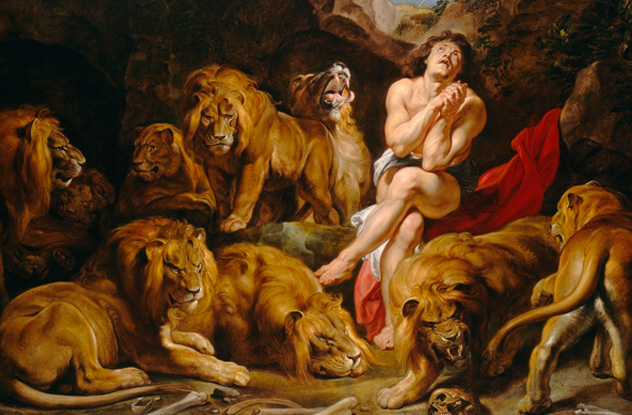
The Book of Daniel is often paired with the Book of Revelation as providing the road map of future end-time events. Many alleged prophecies in Daniel were fulfilled, but is that because Daniel was a divinely inspired seer?
Critical scholars see a more mundane explanation. Daniel might actually be a Jew from the Hellenistic period, not a person from the Babylonian court. His so-called prophecies were made ex eventu, or after the fact, so that he could pass himself off as a genuine seer.
The book itself betrays more than one author. Chapters 1–6 were written in Aramaic, while chapters 7–12 are in Hebrew. Daniel makes many historical errors when talking about the Babylonian period, the time in which he supposedly lived. For example, he claims that Belshazzar was the son of Nebuchadnezzar, but the Nabonidus Cylinder found in Ur names Nabonidus as Belshazzar’s actual father. Also, Belshazzar was a crown prince but never a king, contrary to Daniel’s claim. In Daniel 5:30, Daniel writes that a certain Darius the Mede conquered Babylon. It was actually Cyrus the Great, a Persian and not a Mede, who overthrew Babylon.
On the other hand, Daniel writes about events of the Hellenistic era with extreme accuracy. Chapter 11, presented as prophecy, is on the mark in every detail. This leads to the conclusion that Daniel was witness to these events but not to those of the Babylonian period, on which he is vague and unfamiliar.
Scholars thus place the writings of Daniel at around 167–164 B.C., during the persecution of the Jews by Syrian tyrant Antiochus Epiphanes. The book was meant as inspirational fiction to encourage the Jews in their time of trial. Daniel did take a shot at making a real prophecy, predicting the death of Antiochus in the Holy Land. This genuine prophecy turned out to be wrong. Antiochus actually died in Persia in 164 B.C.
6The Gospels Are Not Eyewitness Accounts
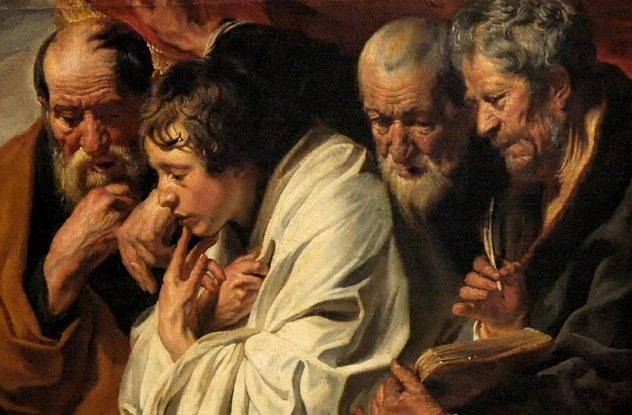
The four canonical gospels in the New Testament are anonymous. The names of Matthew, Mark, Luke, and John were not attached to them until the second century.
Whoever the original evangelists were, they never claimed they were reporting actual events they themselves saw. The gospels function more like religious advertisements than biographies of Jesus in that they are theologically motivated. Each presents a particular interpretation of Jesus in which Jesus serves as a spokesperson for an evangelist’s theological position.
In Matthew, the most Jewish of the Gospels, we hear Jesus proclaim the continuing validity of the Torah. In the gentile-oriented John, Jesus Himself breaks the Sabbath. Mark presents a Jesus who is in agony and distress before His death; the Johannine Jesus, by contrast, is calm and in total control.
Some scholars have proposed that the Gospels were written as midrash, a Jewish interpretative technique that reworks old scriptural narratives into new forms—a “remake,” as Hollywood would style it. Thus, Jesus’s 40-day sojourn in the desert parallels Moses’s 40 years of exile in Midian. When Jesus comes out of the desert announcing the Kingdom of God, that was taken from Moses returning from exile and proclaiming Israel’s coming liberation from slavery. The call of the Twelve Disciples was inspired by Elijah’s call of Elisha. And so on it goes—the gospels were constructed from bits and pieces of old stories but with new cast members and a new stage.
5Matthew And Luke Plagiarized Mark
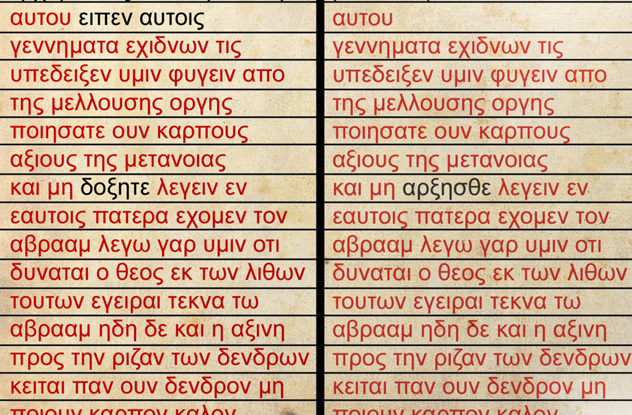
The majority of New Testament scholars agree that Mark’s gospel was written first out of all four gospels. It is short, was written in poor Greek, and contains geographical and other errors.
Rather than being independent accounts of the life of Jesus, the gospels of Matthew and Luke can be shown to have borrowed heavily from Mark, in some instances even copying him almost verbatim. Matthew uses about 607 of Mark’s 661 verses; Luke incorporates 360.
To their credit, Matthew and Luke improved on Mark’s original text. They corrected grammar, style, accuracy, and theology.
For example, Mark 5:1 erroneously calls the eastern edge of the Sea of Galilee the country of the Gerasenes, which is actually more than 50 kilometers (30 mi) away. Matthew 8:28 substitutes the more plausible Gadara, a spa only 12 kilometers (8 mi) from the lake. In Mark 7:19, Jesus “declares all foods clean,” something the Torah-observant Matthew apparently disagreed with, since he didn’t copy the statement in his parallel account.
Mark wrongly attributes a quote from Malachi to Isaiah; Matthew 3:3 corrects this mistake. Mark’s more primitive Christology allows Jesus to be called “Lord” only once, and not by a Jew. In the more developed Christology of Matthew, “Lord” is used 19 times, and in Luke, it’s used 16 times.
4The Lost Gospel Q

Matthew and Luke share common material not found in Mark. Scholars suspect they had a document, now lost, as their source for these sayings, which they call “Q” (from the German Quelle, or source). We can reconstruct Q by noting the commonalities between Matthew and Luke. Q must have included such biblical gems as the Beatitudes and the Lord’s Prayer.
Verbal agreements between Matthew and Luke suggest the non-Markan material must have been taken from a written, not oral, source. Matthew and Luke could not have copied from each other because each has stories that contradict the other (e.g., the Birth Narrative and the Resurrection).
Q is largely a collection of sayings, not a narrative. Matthew and Luke put the sayings in a narrative context, and they used different styles. For example, Matthew incorporated the Beatitudes into Jesus’s Sermon on the Mount, while Luke chose to break up the same sermon and scatter it throughout his story.
The recovery of Q led researchers to a strange conclusion. Since Q does not contain any Passion story, whoever first wrote the document must have regarded Jesus as a teacher of wisdom and nothing more. Jesus’s death held no salvific significance for that writer.
3Simon Magus And St. Paul Were The Same Person
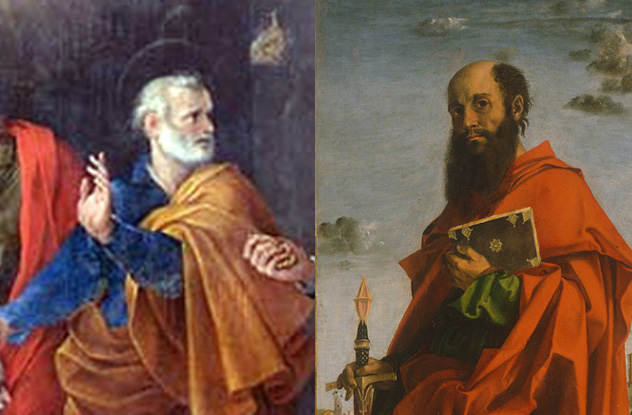
While some of this article’s theories have been accepted by mainstream critical scholars, others venture into more speculative scenarios.
One of these concerns Simon Magus. Church fathers condemned him as the originator of Gnostic heresy, with its hostility to the God of the Jews and the Torah. So it may come as a shock that Paul, the foremost Christian apostle and author of much of our New Testament, might actually be the same person as Simon.
It is difficult to obtain a consistent train of thought from Paul’s epistles. The writings are rambling and disjointed with conflicting theologies. Did Paul uphold the Law or didn’t he? Did he allow women to participate in church or didn’t he? Did he seek approval for his gospel from men or didn’t he? Scholars such as Herman Detering and Robert Price propose the radical view that the Pauline letters have been interpolated into and reworked by later scribes to erase or tone down its Gnostic concepts. This made it more palatable to the infant proto-orthodox Roman Church. The unadulterated original letters, it is suggested, must be the work of Simon Magus or one of his followers.
Parallels exist between Simon and Paul. Simon was notorious for his encounter with the apostle Peter. In Galatians
If the identification of Paul with Simon is correct, a large part of the New Testament was founded on the works of an arch-heretic.
2The Pastoral Epistles Are Forgeries

The letters to Timothy and Titus differ from the writing style and theological focus of the genuine epistles of Paul. This suggests that the Pastorals were actually the work of a forger trying to ride on the coattails of Paul’s authority. Most scholars, not wanting to call the Pastorals “forgeries,” label them “pseudepigrapha” instead, which amounts to the same thing.
Of the 848 words (excluding proper names) found in the Pastorals, 306 were never used in the rest of the Pauline epistles. The vocabulary of the Pastorals is more like the language of popular Hellenistic philosophy than the language of Paul. The literary style also betrays the forger. While Paul uses dynamic and emotional Greek, the Pastorals are serene and meditative. Finally, the letters focus on issues of more concern to an emerging second-century Catholicism than to a first-century Paul, such as church organization and the preservation of tradition. In writing the Pastorals, the emergent Church transformed Paul from a Gnostic “Apostle of the Heretics” to a defender of proto-orthodoxy.
Professor David Trobisch has a suspect in mind for the forgery: Bishop Polycarp of Smyrna. Trobisch says that Polycarp virtually signs his name in II Timothy 4: “The cloak that I left at Troas, with Carpus, when thou comest, bring with thee, and the books, especially the parchments.” The name Carpus, unlike the others in this chapter, never appears in Acts or the earlier letters of Paul. Here, Carpus is said to have Paul’s “cloak”; that is, he had taken on Paul’s mantle. He also had Paul’s writing materials. A later verse mentions a fellow named Crescens, and though he never appears anywhere else in the canonical epistles, a Crescens is mentioned in the Epistle of Polycarp.
1John Did Not Write Revelation
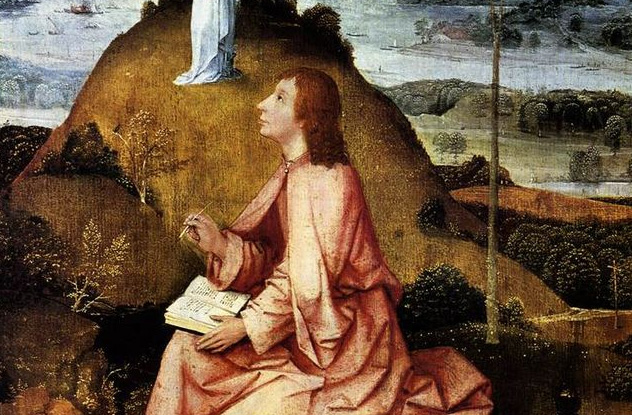
The traditional view that Jesus’s disciple John wrote the Book of Revelation was questioned as early as the third century. Christian writer Dionysus of Alexandria, using the critical methods still employed by modern scholars, spotted the difference between the elegant Greek of John’s gospel and the crudely ungrammatical prose of Revelation. The works could not have been written by the same person.
Dionysus noted that the John of Revelation identifies himself in the work, while the John of the gospel does not. He argued that the two men simply shared the same name.
Contemporary scholars have added their own insights into the problem. It is now theorized that the real author was a Jew who opposed the Pauline version of Christianity, with its Gentile elements and Torah-free salvation. The author calls a Pauline church in Smyrna a “synagogue of Satan” and a female leader of another in Thyatira “Jezebel.” In short, he was not someone we would call Christian today.
In fact, Revelation might have been originally written even before Christianity. References to Jesus Christ would then have been inserted only later to Christianize the document. These are mostly clustered around chapters 1 and 22, with just a scattering elsewhere. Surprisingly, these verses can be removed without disturbing the structure and flow of the surrounding verses, keeping the meaning and sense of the text intact. This suggests that the original Book of Revelation had nothing at all to do with Jesus.
Larry is a former Christian fundamentalist who retains interest in the Bible and the history of early Christianity. He is also an avid chess player. You can check out his book The Chess Workout on Amazon.

